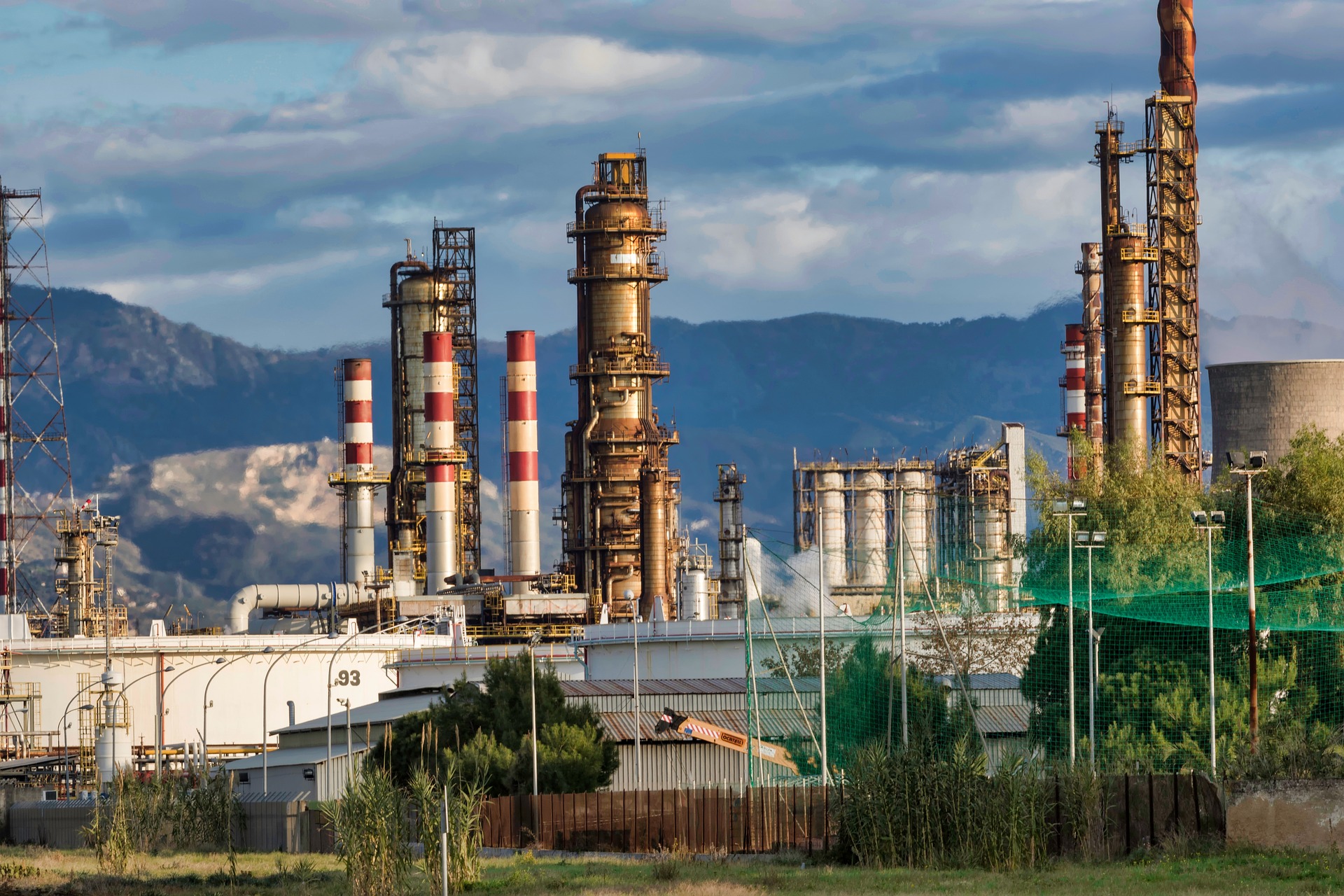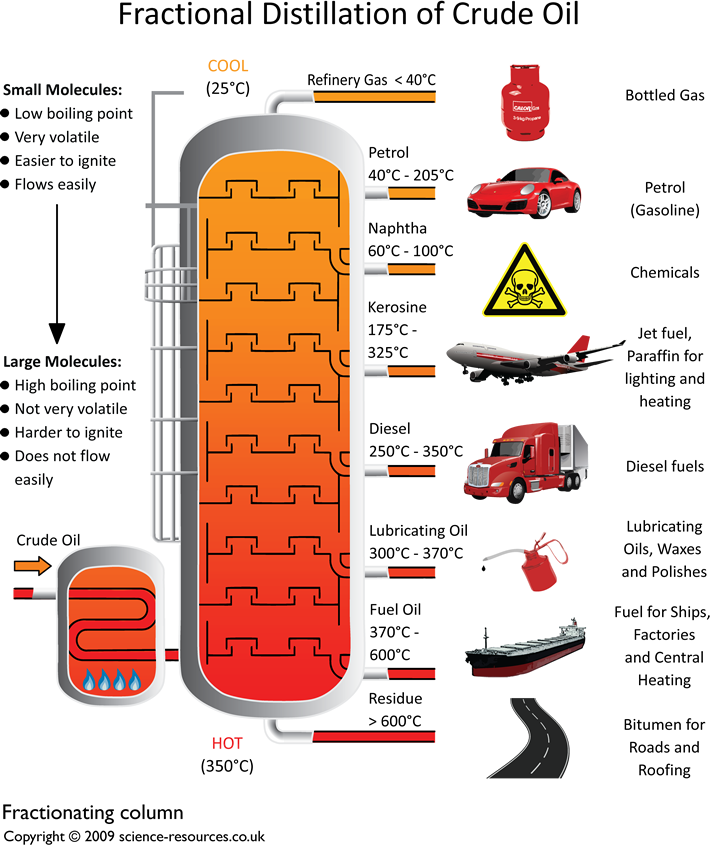Home > Sections > The Atmosphere > Crude Oil
Last Updated: 14th June 2023
ARCHIVED ITEM: this page is no longer updated.
Crude Oil
Keywords
Crude oil, by-product, raw material, petrol, kerosene, aircraft fuel, diesel, biomass, alkanes, fractional distillation, bobbing lid, liquid form, solid form.
Introduction
Crude oil is a fossil fuel that we use to power our cars using petrol or diesel, as well as heat our homes. But what does that actually mean?
Breakdown of Oil
Found in rocks underground, crude oil was formed millions of years ago from the remains of sea creatures, mainly plankton. These plankton were subjected to tonnes of pressure and got trapped in mud at the bottom of oceans.
Crude oil is a form of biomass. It was made from the remains of creatures that lived many years ago. We have used this resource for just over 100 years, and it is a finite resource. This means it will eventually run out, unless we find other sources underground. But now, there is a shift of awareness that these fossil fuels are harmful to the environment, in creating climate change and global warming.
A mixture of compounds, crude oil contains many hydrocarbons. They are compounds that contain hydrogen and carbon only. These are mostly called alkanes.
An alkane is a hydrocarbon that is saturated - meaning it is wet.
Interesting fact: crude oil is extracted from sedimentary rock, but is in both liquid form and solid form. It is then stored with a bobbing lid to protect it from exploding.
How it is Processed
We can process crude oil by using fractional distillation. This is a process that splits the hydrocarbons from each other, so that we can use them for various purposes.
We superheat the oil until it is vaporised (evaporated). This is then entered into a fractioning tower, which is cooler at one end and hotter at the other. Depending on what temperature the oil is, as it cools, it condenses at different heights as the hydrocarbons have different boiling points. Smaller molecules are situated at the top, in the cooler part, and larger molecules are collected at the bottom.
Here is a YouTube video from Cognito on Crude Oil and fractional distillation:
Uses of Crude Oil
Crude oil can be used for the following:
- liquefied petroleum gases - cars and gas heaters
- petrol - cars
- kerosene - aeroplanes
- diesel - cars and lorries
- heavy fuel oil (ships and heating)
Other uses include the use for feedstock to process as medicines, detergents, lubricants and polymers.







